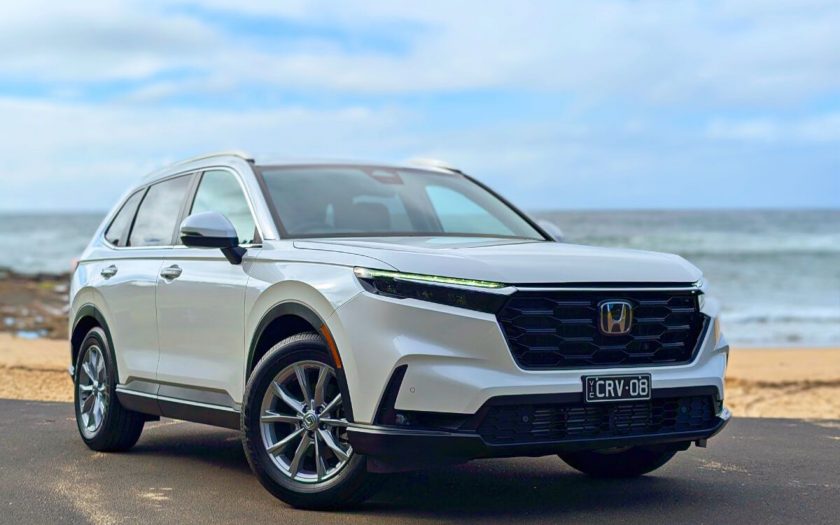Chris Riley tests the 2024 Honda CR-V VTi L7 mid-size SUV with pricing, specs, ride and handling, safety, verdict and everything the over-50 driver needs to know.
Summary: Honda has had to cut prices and offer better value for money in the face of strong Chinese competition. And there’s no haggling over the price.
2024 Honda CR-V VTi L7 mid-size SUV
Pricing: $53,500 (plus on road costs)
Warranty: Five-years, unlimited km, five years roadside assist
Safety: Not ANCAP tested
Engine: 1.5-litre normally aspirated four-cylinder petrol engine
Service intervals: 10,000km/12 months
Power: 140kW @ 6000rpm
Torque: 240Nm @ 1700rpm
Transmission: single-speed constantly variable, front-wheel drive
Body: 4704mm (long); 1866mm (wide); 1681mm (high)
Build country: Thailand
Kerb weight: 1700kg
Towing capacity: 1000kg
Wheels: 18-inch alloy
Tyres: 235/60R18
Spare wheel: space saver
Ground clearance: 198mm
Turning circle: 11.0m
Fuel tank: 57 litres
Thirst: 7.3L/100km (unleaded 91 RON)
Consumption on test: 7.1L/100km (550km)
seniordriveraus consumption on test: not tested
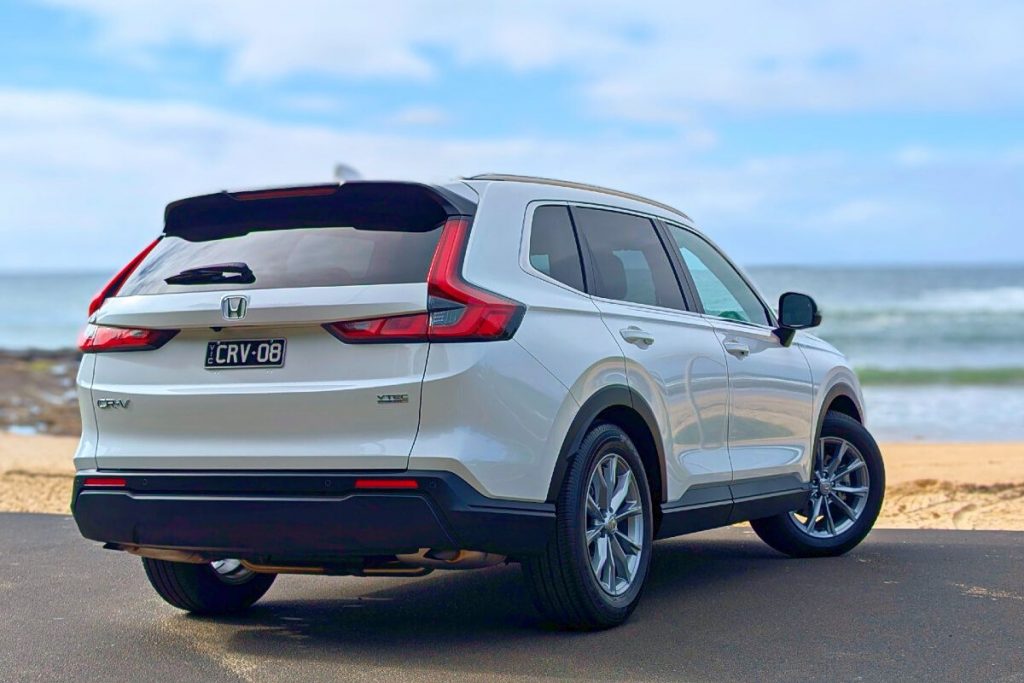
[review]
Introduced in July last year the sixth-generation and latest CR-V is targeted at families.
The concept has been further refined with styling that is more sophisticated, and some might say sporty, with particular attention to the cabin.
With Chinese competitors knocking on the door, Honda has been forced to cut costs, discarded dealers and moved to a fixed price, ‘haggle-free’ sales structure.
It has also seen the emergence of a more premium lineup, but with a price tag to match.
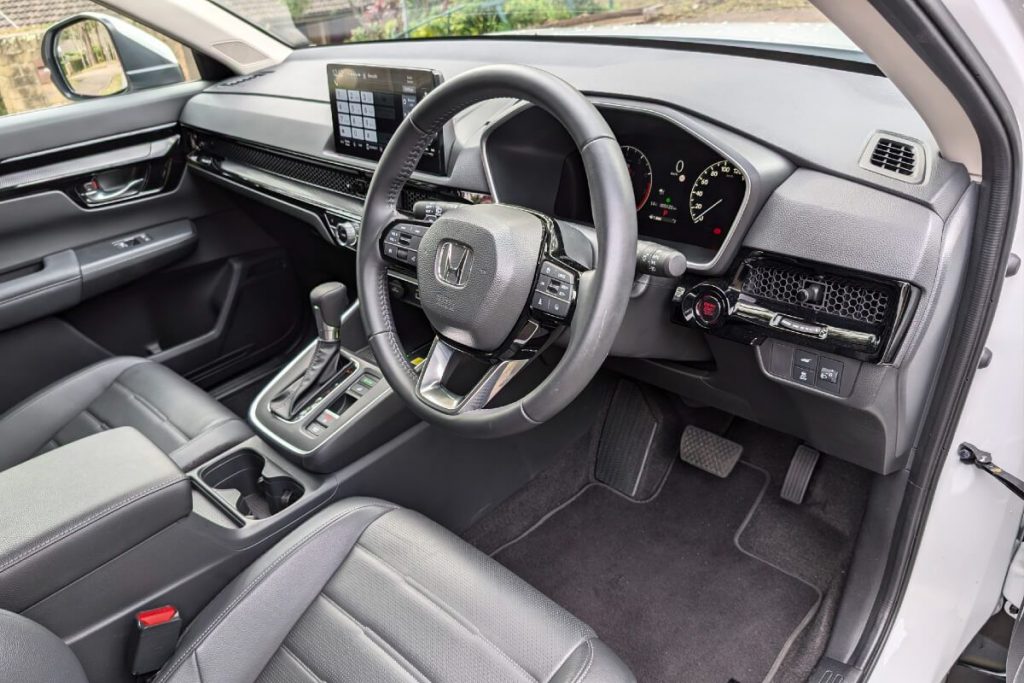
What’s it cost?
Prices start from $43,900 driveaway for the five-seat, two-wheel drive 1.5-litre VTi X with an auto.
The VTi X7 is basically the same model with seven seats and is priced from $46,800.
The newly introduced + grade adds blind spot and rear cross traffic alerts.
There are six colours and eight grades, in order of price and equipment: VTI X, VTi X+, VTi X7, VTi L, VTi L7, VTI L AWD, VTi LX AWD and e:HEV LX (was RS).
All but the last one are powered by the same 1.5-litre turbocharged four cylinder engine.
And only the VTI L and VTI LX are available with all-wheel drive (VTI L can be had with two- or all-wheel drive for $4200 more).
Top of the range is the e:HEV LX, a 2.0-litre, two-wheel drive, self-charging hybrid that was previously offered in RS form.
Confusing, eh? That’s marketing for you.
Our test vehicle, the two-wheel drive, seven-seat VTi L7, is priced from $53,500 driveaway.
Stepping up from the X7 adds: smart keycard, built-in navigation, a panoramic sunroof and black leather-appointed seat trim with heated front seats.
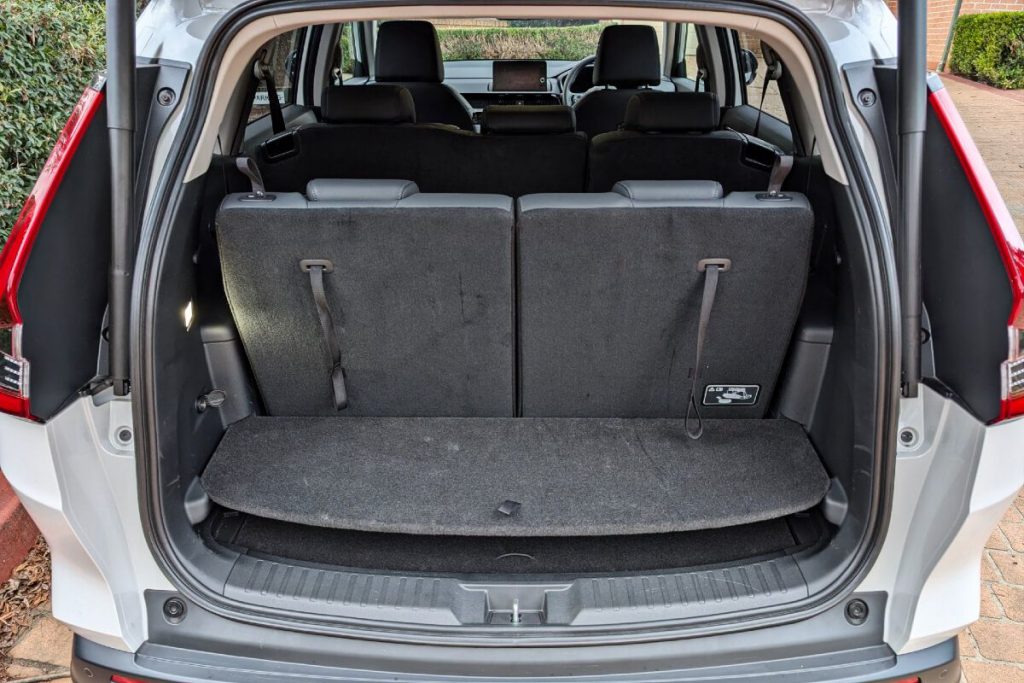
At 4694mm, new CR-V is 59mm longer than the previous model, with a 40mm longer wheelbase that provides 15mm more rear legroom.
Entry VTi X comes with 17-inch wheels, premium fabric seats, two-zone climate control with rear air vents, powered driver seat, smart keyless entry with push button start and walk-away automatic door locking.
There’s also a power-operated tailgate, adaptive LED headlights, auto lights (but not wipers), front and rear park sensors, 9.0-inch touchscreen infotainment, eight-speaker audio and wireless phone charging.
VTi-L adds 18-inch alloys, leather trim, ‘i-two zone climate control’, heated front seats, driver-seat memory, powered front passenger seat, leather-wrapped steering wheel and gear shifter, auto dimming rear view mirror, and auto rain-sensing wipers.
LX jumps to 19-inch alloys, a panoramic sunroof and 12-speaker Bose audio.
Our test vehicle comes with a space saver spare.
Infotainment consists of a 9.0-inch colour touchscreen, eight-speaker audio, active noise control, Bluetooth, AM/FM/DAB+ digital radio, wireless Apple CarPlay and wired Android Auto, wireless smartphone charging pad plus connection to the Honda Connect app.
VTi-L adds satellite navigation and a Smart KeyCard.
There’s USB-A and -C ports in front, along with a 12 volt/180W outlet, with another two USB-C ports in the back and a 12-volt outlet in the luggage area.
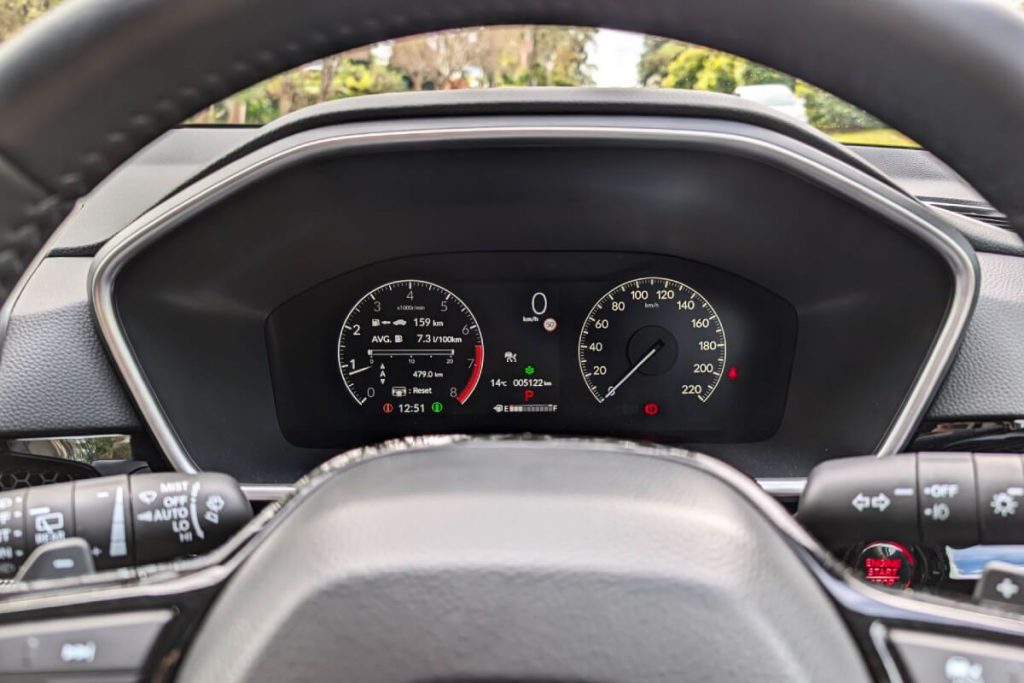
The new CR-V is still yet to be rated by ANCAP for safety. We’re not sure why it takes so long for a mainstream model.
An improved Honda Sensing safety system features a total of 11 airbags, with a new front camera and radar system.
Honda’s Advanced Compatibility Engineering (ACE) body structure has been updated to distribute crash energy more evenly throughout the front, side, and rear of the vehicle.
There’s also forward collision warning, autonomous emergency braking (AEB), lane departure and lane keep assist, traffic jam assist, road departure mitigation, adaptive cruise control, low-speed braking control, traffic sign recognition and high beam support.
VTi-L and above add blind spot monitoring and rear cross traffic alert with e:HEV RS also getting LED active cornering lights and adaptive driving beam.
However, there’s no head-up display or 360-degree camera.
CR-V comes with a 5-year unlimited kilometre warranty, plus 5-year roadside assistance.
Service intervals are 12 months or 10,000km, with the first five visits capped at $199.
Variants with satellite navigation receive five years of complimentary over the air map updates.
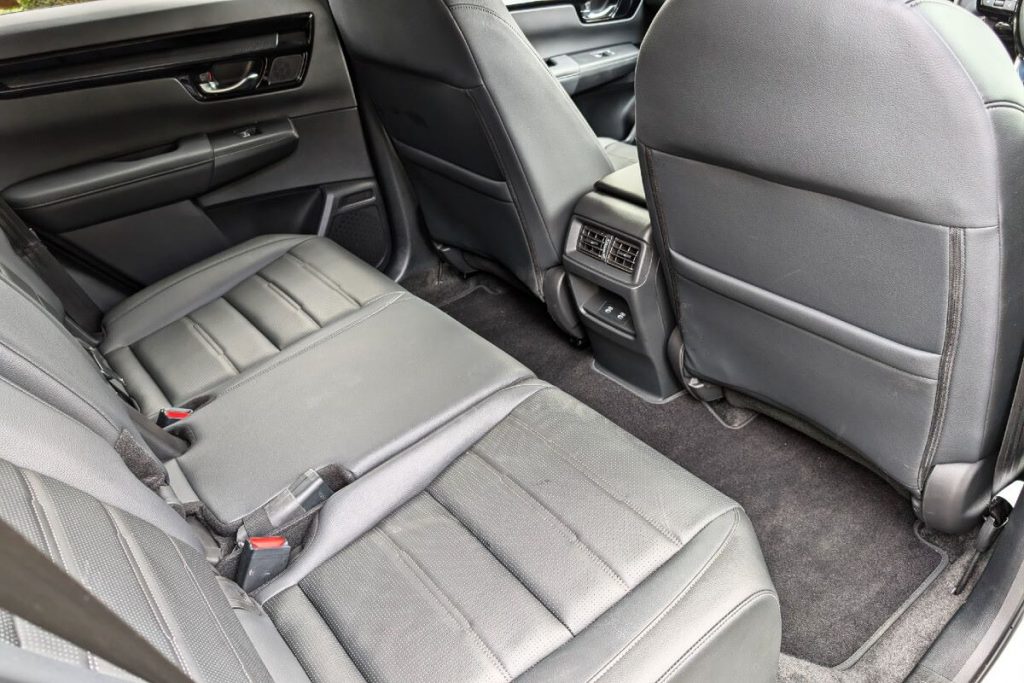
What’s it go like?
By repositioning the front pillars and moving the side mirrors to the doors, designers have achieved a raked, sportier look along with better forward visibility.
Honda interiors have always been functional but cheap-looking, but this one is a definite step forward, although it still falls short of premium.
While the previous CR-V looked pretty good, this one looks slicker and more mainstream, with its black honeycomb grille and thin LED headlights.
In fact, it has a passing resemblance to the RAV from some angles.
Inside the instrument binnacle is the same general shape, but the rest of the dash has been redesigned.
The touchscreen has been liberated from its inset position, with a long thin air vent that stretches the breadth of the cabin.
In this grade, the instrument panel is fully digital, but retains the look and feel of an analogue unit, with twin circular dials for tacho and speed.
Apart from the left, central information panel, you can’t change the appearance.
The 1.5-litre turbocharged four carries over.
While it produces exactly the same amount of power and torque, Honda says it has been significantly revised.
Full power of 140kW arrives at 6000 rpm, 500 rpm later in the rev range, while maximum torque of 240Nm is generated between 1700 and 5000 rpm – 300 rpm earlier.
In comparison, the hybrid with two electric motors delivers 135kW and 335Nm, the latter figure the more significant as it is produced from get-go – between zero and 2000 rpm.
Transmission is via a CVT continuously variable auto with seven steps or gears that are controlled by change paddles.
In the hybrid these paddles are repurposed to control the level of regenerative braking.
Our L7 uses a claimed 7.3L/100km of standard unleaded.
In comparison, the hybrid is good for 5.5L/100km.
The turbo in this model produces 167g/100km of CO2, while the hybrid is rated at 125g/100km (worth consideration).
VTEC variable valve timing and lift control have been added to the exhaust side of the twin-cam head to improve fuel efficiency.
Improving acceleration is a high-efficiency, high-response turbocharger and low pressure-loss turbocharger piping.
Engine noise has also been significantly reduced with a new high-rigidity crankshaft, oil pan, and a new intake cover.
Further noise reduction comes from noise-absorbing engine mounts and a new muffler shape.
In order to reduce belt noise, the thickness of the transmission casing has been increased, with added ribs to increase case rigidity and suppress vibration.
Ride quality is where it should be for the target market and that is middle of the road.
You could argue the ride is a little soft, with too much body roll when you start to push hard – but remember, this is a vehicle designed primarily for comfort.
The steering is light but accurate, while the brakes require minimum effort.
CR-V features up to three driving modes: Normal, Econ which reduces throttle and transmission sensitivity as well as air conditioning output to help preserve fuel efficiency, and Sport mode that enhances throttle response and engine sound.
Our L7 misses out on the latter, but dropping the transmission into the ‘S’ position acts as a de facto sport mode, keeping engine revs to around the 3000 mark where the car performs best.
Significant improvements to the CR-V’s structural stiffness, including a redesigned front sub-frame, benefit its ride quality, handling, and collision safety protection.
The interior has been optimised to make the cabin and cargo feel more spacious in both five- and seven- seat variants, with the second row able to slide, providing more legroom if required.
As well as 15mm more legroom, the rear seat now offers 16 different recline settings instead of two and is able to recline a further 10.5 degrees.
Honda claims the third row in seven-seat variants can comfortably accommodate 170cm tall occupants, with access via a single action lever on top of the second-row seat.
Looks pretty cramped to me.
In terms of fuel consumption, we were getting 7.1L/100km after more than 550km of mixed driving.
What we like
- All so easy
- Simple cabin layout
- Rear air vents
- Good-sized luggage area
What we don’t like
- Lacks punch
- CVT transmission
- Fuel consumption a bit high
- Space-saver spare
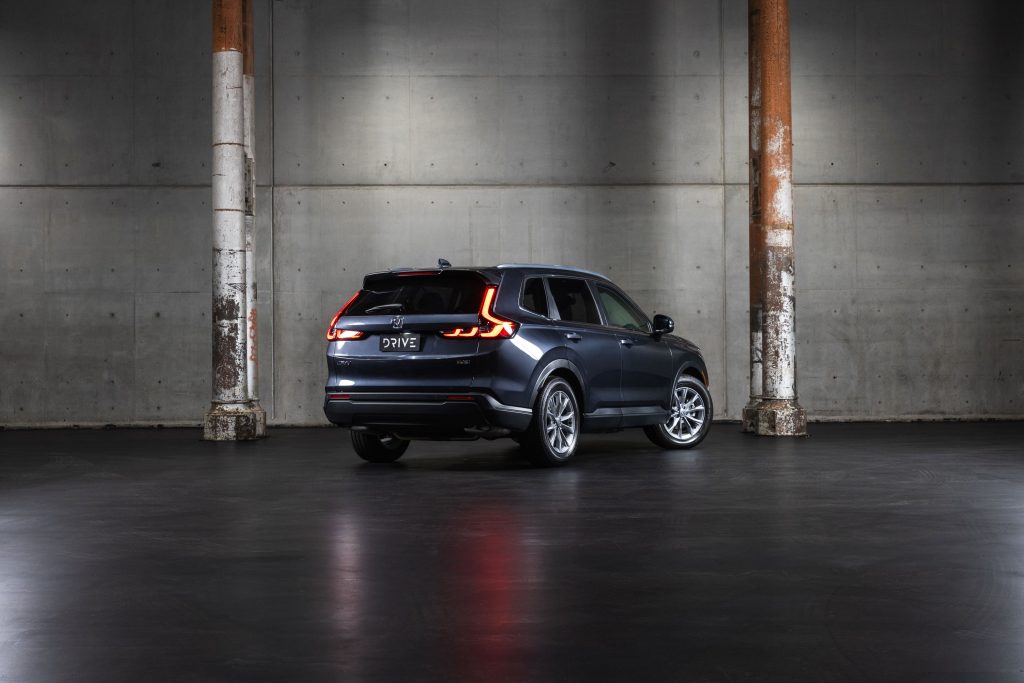 What over-50s need to know
What over-50s need to know
CR-V should be at the top of the list for older drivers.
It’s not too big and not too small, easy to get in and out of, quiet inside and pretty comfortable.
The cabin layout is practical and user-friendly and you won’t be bombarded with information that is of no immediate interest.
What’s more it doesn’t use much fuel and has a good-sized luggage area for touring. Too bad about the space saver spare.
The only thing missing is the fun factor. Although it’s easy to drive with good roll-on acceleration, it lacks some punch when you start to push enthusiastically.
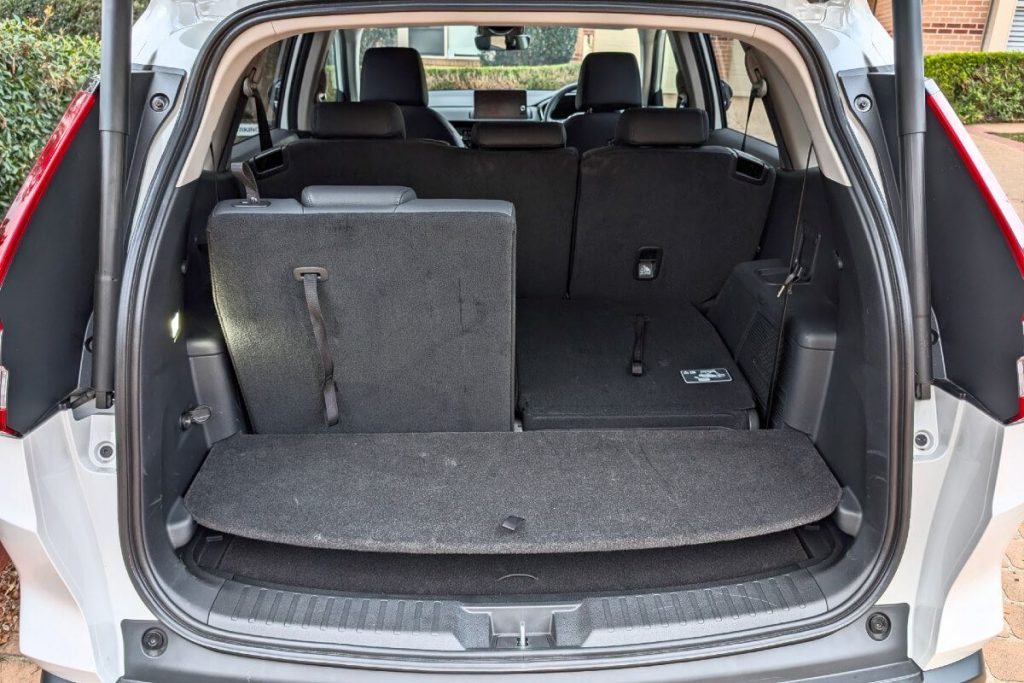
seniordriver comments
Honda has always been high on the wish list for the over-50s. Well built, conservatively styled and delivering a good value-for-money proposition, it’s not surprising.
But the arrival of cheaper Chinese alternatives has really put pressure on Honda and forced them to look at pricing and the overall package.
It’s hardly bargain-basement territory (and you won’t be able to haggle) but prices from $43,900 driveaway should appeal. Mind you, you’ll need to think carefully about exactly what you want because there are eight grades, and six colours to choose from. And when you move into the higher spec models, prices rise significantly.
The absence of a current ANCAP rating is of some concern, and as Chris points out, we’re not sure why it takes so long for mainstream models to be ANCAP-certified. The lack of a head-up display or a 360-degree camera may have some bearing on the final rating.
Service intervals of 10,000km are a little shorter than is the norm these days, although we’re great believers that shorter intervals make sense because a lot can go wrong when the service interval is 15,000 or 20,000km, and people are notoriously averse to having their cars serviced more than is recommended.
For a change, the achieved fuel consumption actually bettered the stated figure (7.1L/100km as against 7.3), and reduced noise levels will be appreciated.
We’re not sure that many “average” Australians are less than 170cm tall, so they probably won’t want to spend too much time in the third row. The sliding option on the centre row is a useful addition.
Of course, when you start to look at the opposition, you realise why Honda has had to sharpen the pencil. Fast-rising BYD has cars in the same ballpark, while MG, Chery and GWM handily undercut the Honda. Mazda offers similar levels of quality and design for around the same price, as do Mitsubishi and Nissan. Braver bargain hunters may want to consider the Mahindra XUV700.
